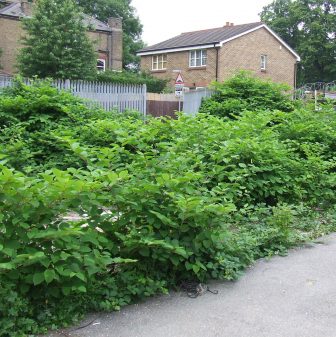 Buyers of new-build homes are being left exposed to the risk of Japanese knotweed, as residential developers are not required to disclose whether the property is affected by the invasive plant unless directly asked, reports Environet UK.
Buyers of new-build homes are being left exposed to the risk of Japanese knotweed, as residential developers are not required to disclose whether the property is affected by the invasive plant unless directly asked, reports Environet UK.
This is in contrast to sellers of second-hand homes who are required to complete the standard TA6 Law Society Property Information Form as part of the conveyancing process, which asks a direct question about whether the property is affected by knotweed.
Those that provide false information pave the way for a ‘misrepresentation’ claim by the buyer to recover the cost of removing the plant and any resulting diminution in the value of their home.
Residential developers do not usually complete a TA6 form since they are not a legal requirement for new build sales. Many of the questions, concerning building alterations for example, are not relevant, while others, relating to warranties and guarantees would be provided separately by the developer and covered under the standard NHBC guarantee for new build homes.
However, it is in the buyer’s interest to establish if the land was treated for knotweed prior to or during construction works, particularly as developers often clear large brownfield sites where Japanese knotweed could be rife and well established.
Unless their solicitor asks about Japanese knotweed as part of their additional enquiries, it is quite possible that the buyer will not know that Japanese knotweed was present on the site and will therefore be unable to check that a professional treatment plan was implemented and the appropriate guarantees secured.
But without any written assurances from the developer, buyers who later find their new home is affected by knotweed are left with only one option: to pursue them for breach of contract, which is notoriously more difficult to prove than a misrepresentation case.
Nic Seal, MD and Founder of Environet says:
“Buyers of new-build homes are not currently given the same protection from the risks associated with Japanese knotweed as buyers of second-hand homes. A large proportion then increase this risk further by failing to commission a survey on their new home, as they think, quite incorrectly, that the NHBC warranty is sufficient to cover them for any defects.
“Put simply, the Japanese knotweed question must be asked. If the residential developer denies that knotweed was present but it is subsequently discovered, this evidence will give the buyer a strong case to sue the developer for misrepresentation, the cost of treatment and any proven diminution of the property’s value.”
Paolo Martini, Director at Cobleys Solicitors and a leading legal expert in the field of Japanese knotweed law, said:
“The excitement of new-build purchases, often agreed off plan, quickly turns to dismay within twelve months when knotweed emerges. Large developments, particularly those on brownfield land which is more likely to be contaminated, can lead to problems for developers and new home buyers alike where knotweed is ignored or remediation fails. Japanese knotweed must be treated by an expert, with full disclosure given to the buyer and quality guarantees provided within the contract of purchase.”
If the residential developer is unable to provide reassurances that the land is knotweed-free, buyers can commission a knotweed detection dog survey to check. The detection dogs can cover a site in a matter of minutes and will indicate by ‘freezing’, or staying completely still, when the unique scent of knotweed rhizome is found.


Comments are closed.